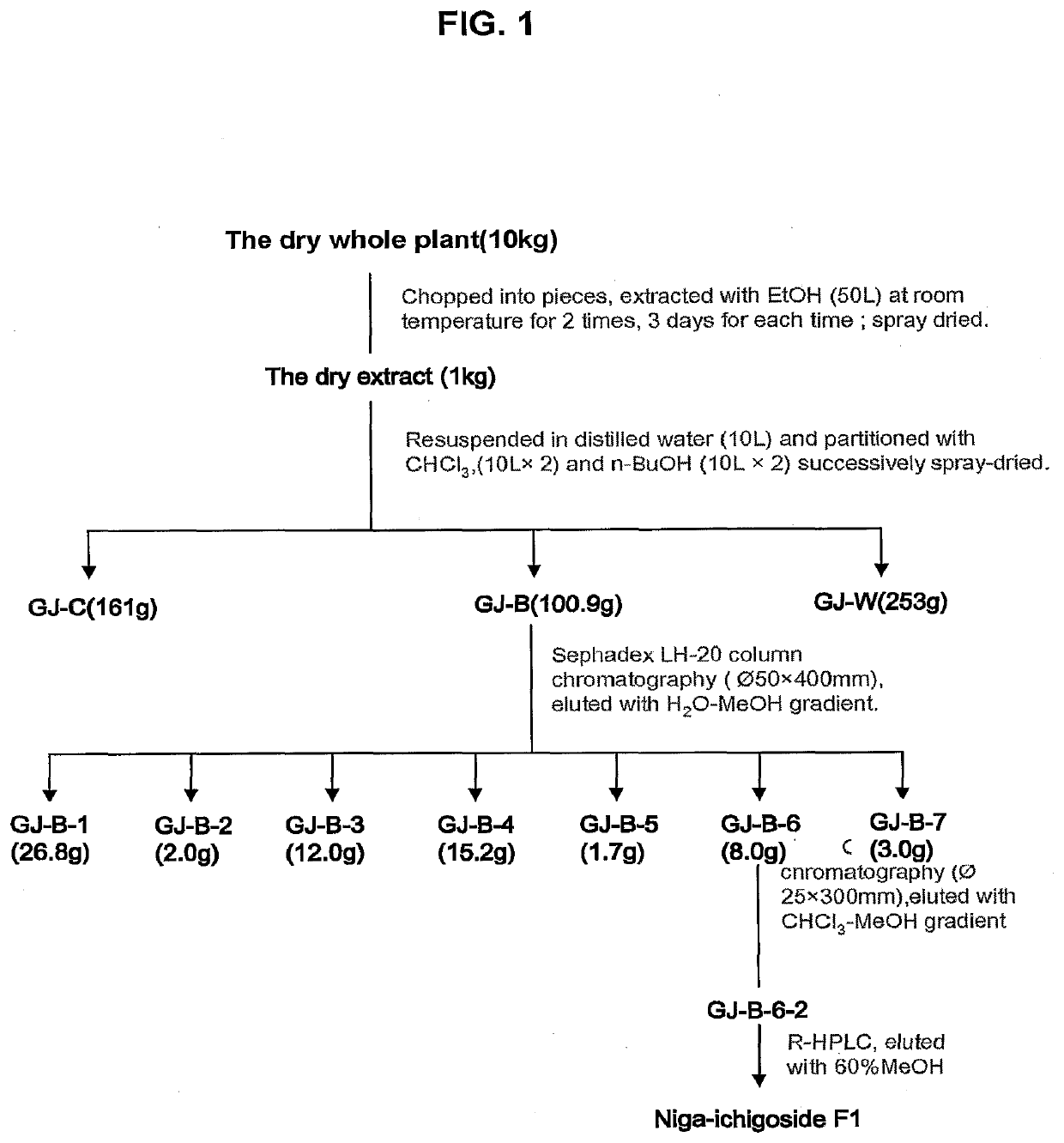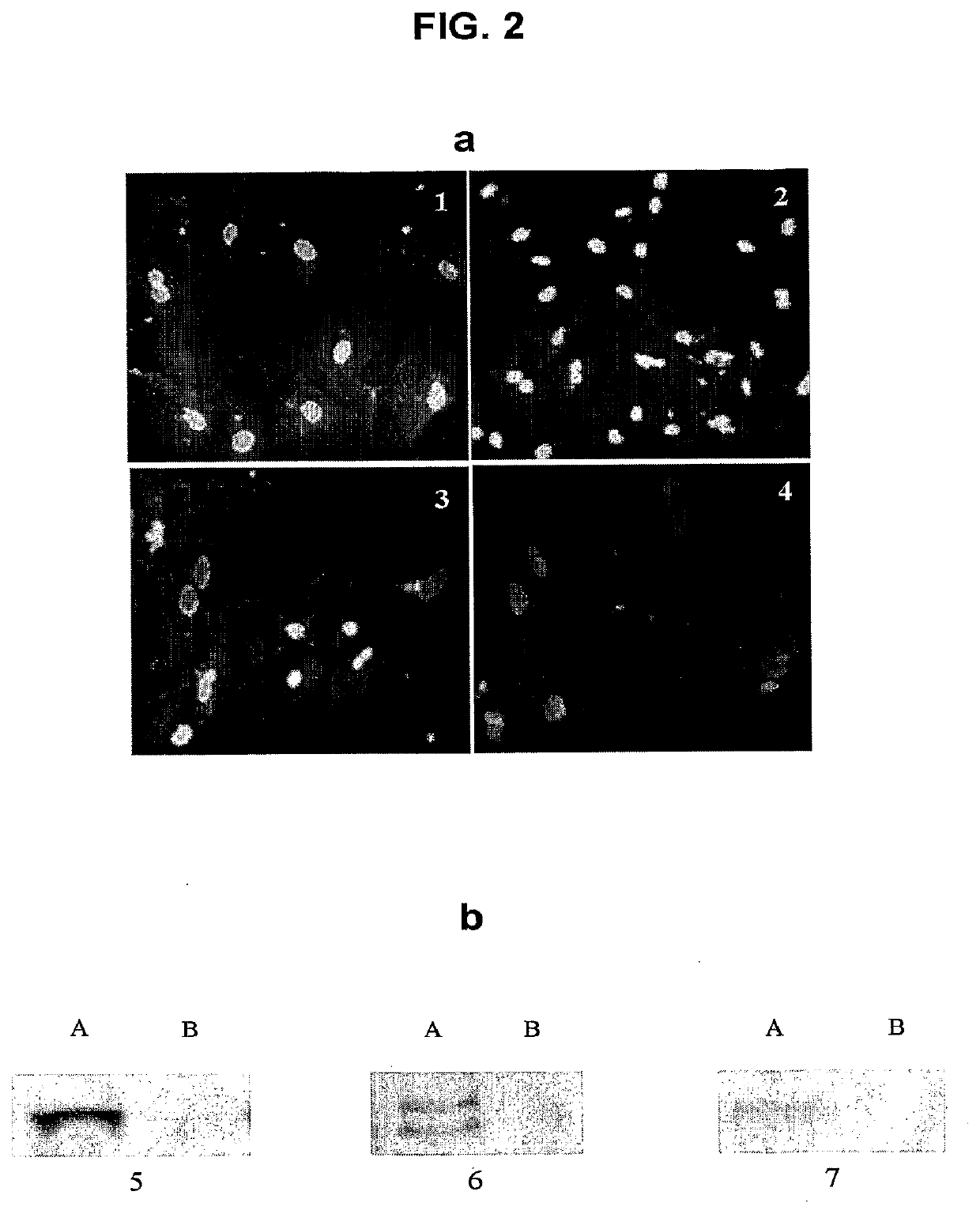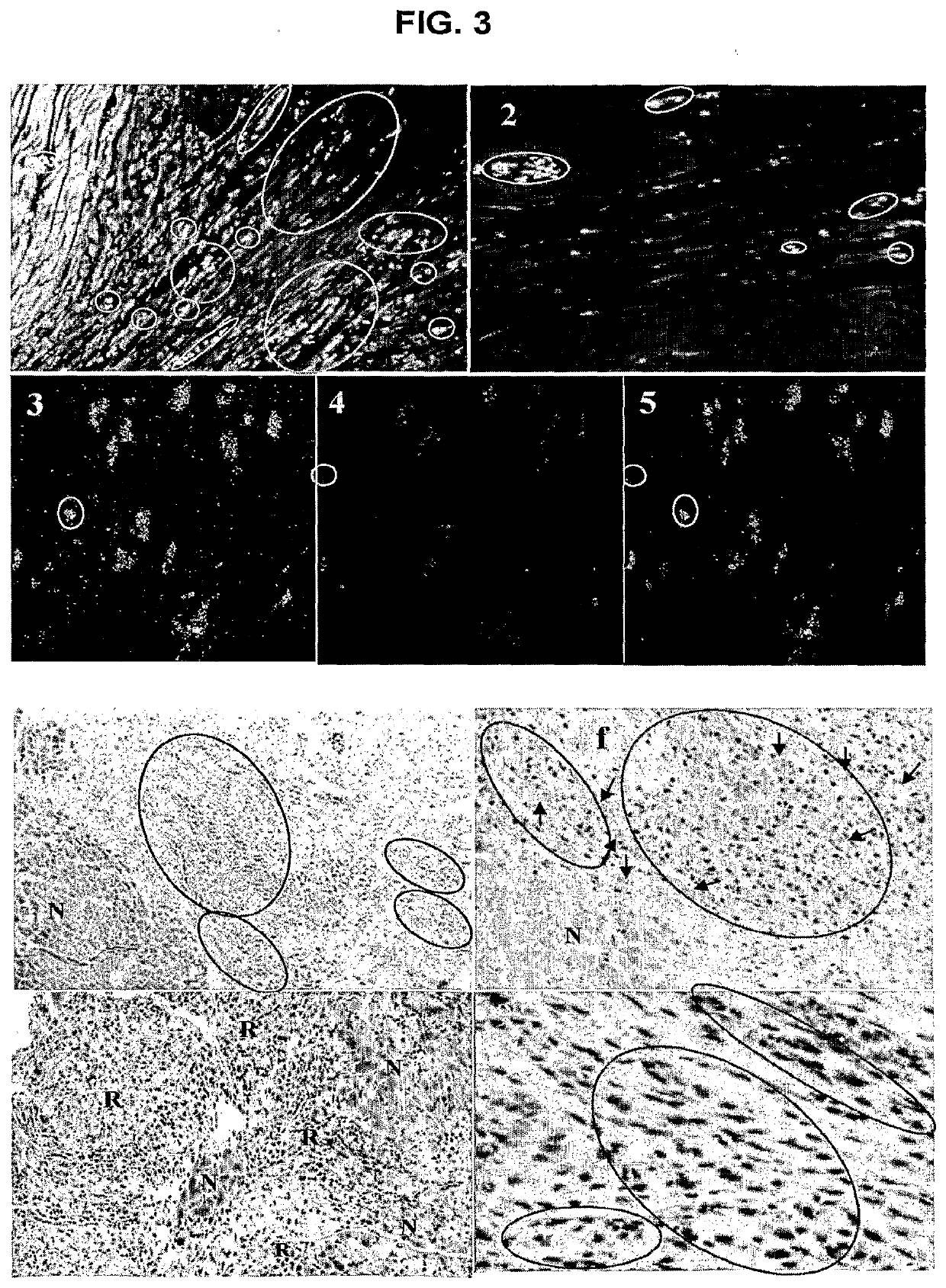Pharmaceutical composition and method for regenerating myofibers in the treatment of muscle injuries
a technology of regenerating myocytes and myofibers, which is applied in the direction of drug compositions, cardiovascular disorders, organic chemistry, etc., can solve the problems of deteriorating cardiac function, unfavorable regenerative functional cardiac myocytes, and failure to reconstitute functional myocardia and coronary arteries. , to achieve the effect of enhancing the survival potential of transplanted cells and enhancing the differentiation efficiency of transplanted cells
- Summary
- Abstract
- Description
- Claims
- Application Information
AI Technical Summary
Benefits of technology
Problems solved by technology
Method used
Image
Examples
Embodiment Construction
I. Experiment Procedures
[0028]All protocols used in the present invention conformed to the Guide for the Care and Use of Laboratory Animals published by the U.S. National Institutes of Health, and were approved by the Animal Experimental Ethical Committee of The Chinese University of Hong Kong.
[0029]For the following discussion, CMF refers to the base compound (or backbone compound) of the present invention. Its chemical structure is defined by formula (I) shown in the above.
[0030]Obtaining Compounds of the Present Invention:
[0031]The compounds can be prepared from plants, although it may possible to make it through chemical synthesis.
[0032]As an example for illustrating the process of preparing the compounds from natural resources, the following provides details involved in CMF's isolation and purification from one plant species, Geum japonicum. Other plants that may contain CMF or variants include, for example, Acaena pinnatifida R. et P., Agrimonia pilosa Ledeb, Asparagus filicin...
PUM
| Property | Measurement | Unit |
|---|---|---|
| Percent by mass | aaaaa | aaaaa |
| Weight | aaaaa | aaaaa |
| Structure | aaaaa | aaaaa |
Abstract
Description
Claims
Application Information
 Login to View More
Login to View More - R&D
- Intellectual Property
- Life Sciences
- Materials
- Tech Scout
- Unparalleled Data Quality
- Higher Quality Content
- 60% Fewer Hallucinations
Browse by: Latest US Patents, China's latest patents, Technical Efficacy Thesaurus, Application Domain, Technology Topic, Popular Technical Reports.
© 2025 PatSnap. All rights reserved.Legal|Privacy policy|Modern Slavery Act Transparency Statement|Sitemap|About US| Contact US: help@patsnap.com



